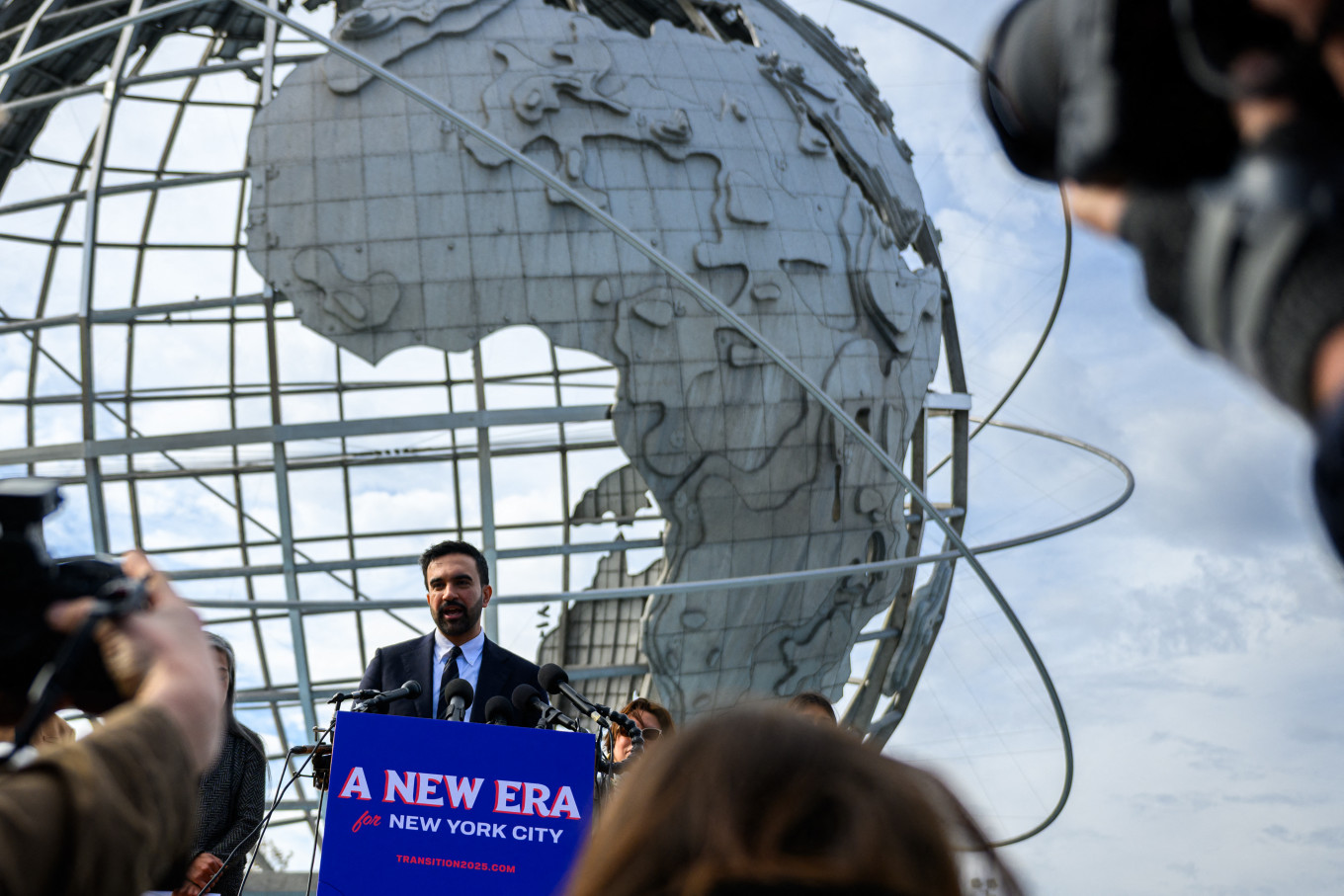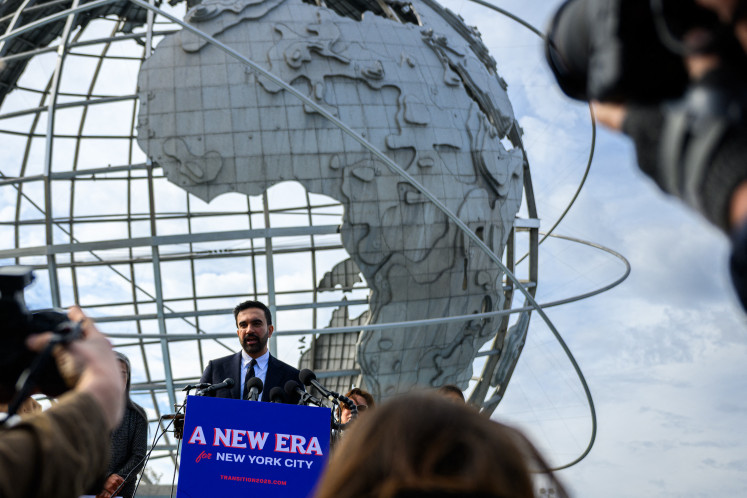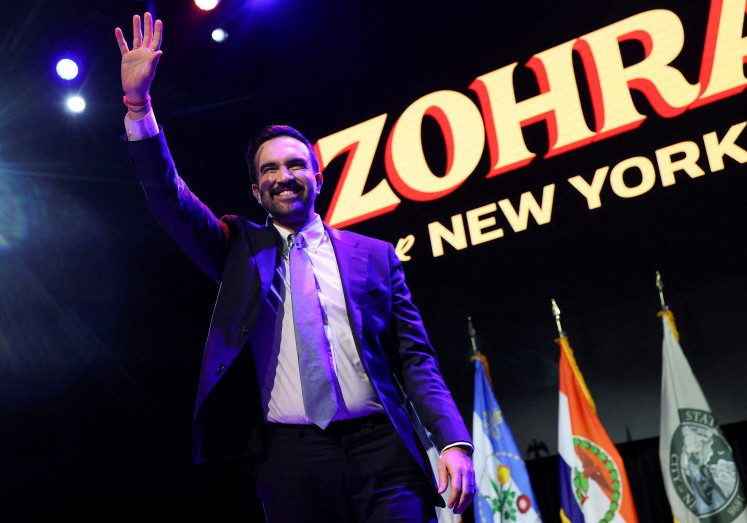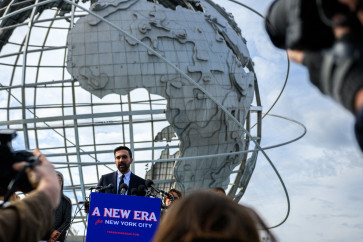Popular Reads
Top Results
Can't find what you're looking for?
View all search resultsPopular Reads
Top Results
Can't find what you're looking for?
View all search resultsThe Mamdani effect: How government failure sways voters
Rising prices of daily needs have created opportunities for “challenger” politicians and parties to brand themselves with “extreme” policy platforms in the next Indonesian election in 2029.
Change text size
Gift Premium Articles
to Anyone
 Mayor-elect Zohran Mamdani speaks during a press conference at the Unisphere in Flushing Meadows Corona Park on Nov. 5 in the Queens borough of New York City. Mamdani won a historic victory to become the city's 111th mayor defeating independent mayoral candidate Andrew Cuomo and Republican mayoral candidate Curtis Sliwa. (AFP/Getty Images/Alexi J. Rosenfeld)
Mayor-elect Zohran Mamdani speaks during a press conference at the Unisphere in Flushing Meadows Corona Park on Nov. 5 in the Queens borough of New York City. Mamdani won a historic victory to become the city's 111th mayor defeating independent mayoral candidate Andrew Cuomo and Republican mayoral candidate Curtis Sliwa. (AFP/Getty Images/Alexi J. Rosenfeld)
L
ocal elections in the United States brought a renewal to the domestic political atmosphere. In particular, attention focused on Zohran Mamdani, elected as New York mayor. As a Muslim immigrant, he was able to secure a strategic position in this metropolitan area. His strategy of “listening” to voters regardless of their background led to his victory, despite initial polls estimating Mamdani’s support at only 1 percent.
The euphoria of Mamdani’s victory was felt in several countries around the world, including Indonesia. Generally, the Indonesian public viewed Mamdani’s election as a breakthrough for a minority leader (i.e., a Muslim) in the US. The Indonesian diaspora in the US also shared the joy after concerns over the past few months regarding law enforcement activities by US Immigration and Customs Enforcement (ICE).
Mamdani firmly supported immigration issues, as evidenced in his victory speech, “New York will remain an immigrant city: a city built by immigrants, supported by immigrants and, starting tonight, led by an immigrant.”
Although the narrative of this victory continues to dominate the media and social media, the conversation often overlooks the strategic reasons behind Mamdani’s victory, which targeted a niche of voters dissatisfied with the Trump and local administration’s performance.
In studies of voting behavior, two broad categories help understand how voters make decisions. The first model is the proximity theory. Anthony Downs proposed that political parties and candidates move toward a “middle” (convergent) position to gain votes.
Given the limited information available, voters will choose the political party or candidate whose policies align most closely with their own, as reflected in the 2024 US presidential election. This was evident in the tendency of voters to choose the candidate whose position aligns most closely with their ideological preferences.
For instance, regarding immigration policy and tariffs: Trump is very conservative with his policies of mass deportations and high tariffs. Meanwhile, Harris was progressive, favoring a pathway to citizenship and increased corporate taxes. In the end, Trump won the election because the median voter base leaned more to the right of the center than to the left.


















